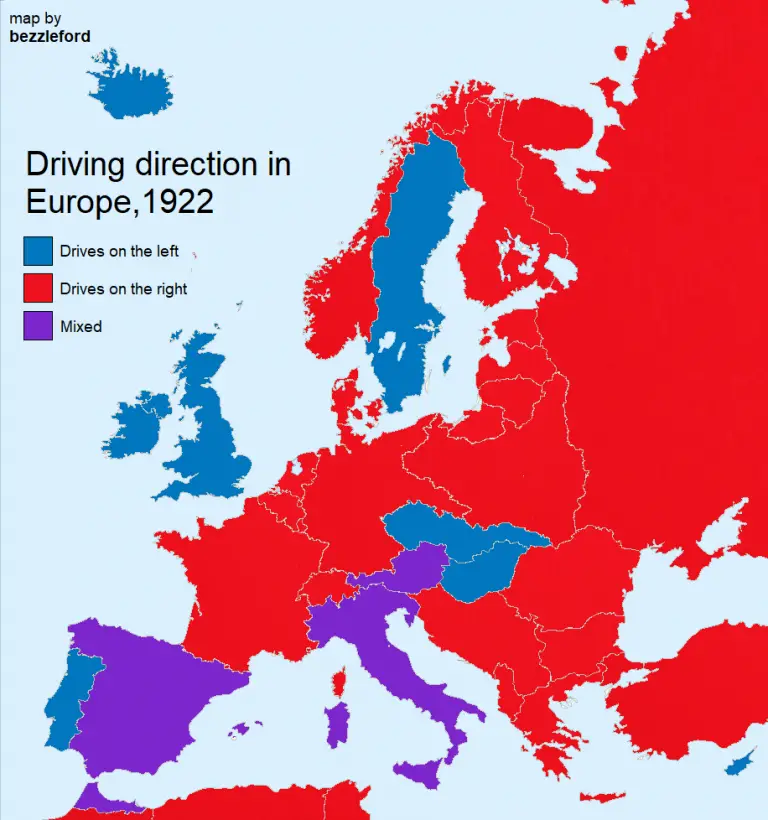History and Origins of Driving on the Left or Right Side of the Road
Drivers around the world follow different conventions regarding which side of the road to drive on. This intriguing difference has interesting historical origins and explanations.
Early History
In early times, most people traveled on the left side of the road. As the majority of people are right-handed, it was safer for sword-wielding travelers to keep their right arms free and closer to opponents they might encounter. Riders also found it easier to mount horses from the left while keeping weapons strapped to their left sides. Furthermore, scabbards hanging from the rider’s left side were less likely to hit other travelers when passing on the left. These medieval traditions helped establish left-side driving in many places.

Horse-Drawn Wagons Introduce Right-Side Driving
In the late 1700s, horse-drawn wagons became more common, especially in France and the United States. These wagons lacked driver’s seats, so drivers sat astride rear horses on the left side to keep control of the team. They naturally wanted others to pass on their left so they could see the wheels of oncoming wagons. This drove the adoption of right-side driving in parts of Europe and North America.
Spread of Right-Side Driving in Continental Europe
Russia began formally requiring right-side travel in 1752 under Empress Elizabeth. Then the French Revolution swept right-side norms across the continent. Aristocrats previously insisted on left driving but blended in on the peasant-used right after 1789 for safety. Denmark and France passed right-side laws in the 1790s, cementing the practice.
British Colonies Stick with Left Driving
While continental Europe shifted right, Britain and its colonies retained left-side norms. When new territories came under British control, they replicated this standard. Today, over 100 nations where Britain once held sway stay left, including India, South Africa, Australia, New Zealand, and others. Steering wheels were also installed on the right in these left-driving lands.
Modern Road Standardization
In the 20th century, new nations often followed neighbors to promote cross-border road safety. Europe gradually aligned except for four holdouts: the United Kingdom, Ireland, Malta, and Cyprus. North America became uniformly right-driving after the last provinces of Canada converted in the 1920s. Now about 35% of global drivers are on the left, while 65% favor the right, each legacy of different historical transportation patterns.
Impact on Vehicle Design
vehicle design also reflects these diverging traditions. Countries where traffic sticks to the left install steering wheels on the right-hand side of cars for the driver to see oncoming vehicles more easily. Right-side driving nations do the opposite. This small but meaningful distinction arose from the earliest days of mounted travelers and persists today through centuries-old habits shaped by history and geography.
